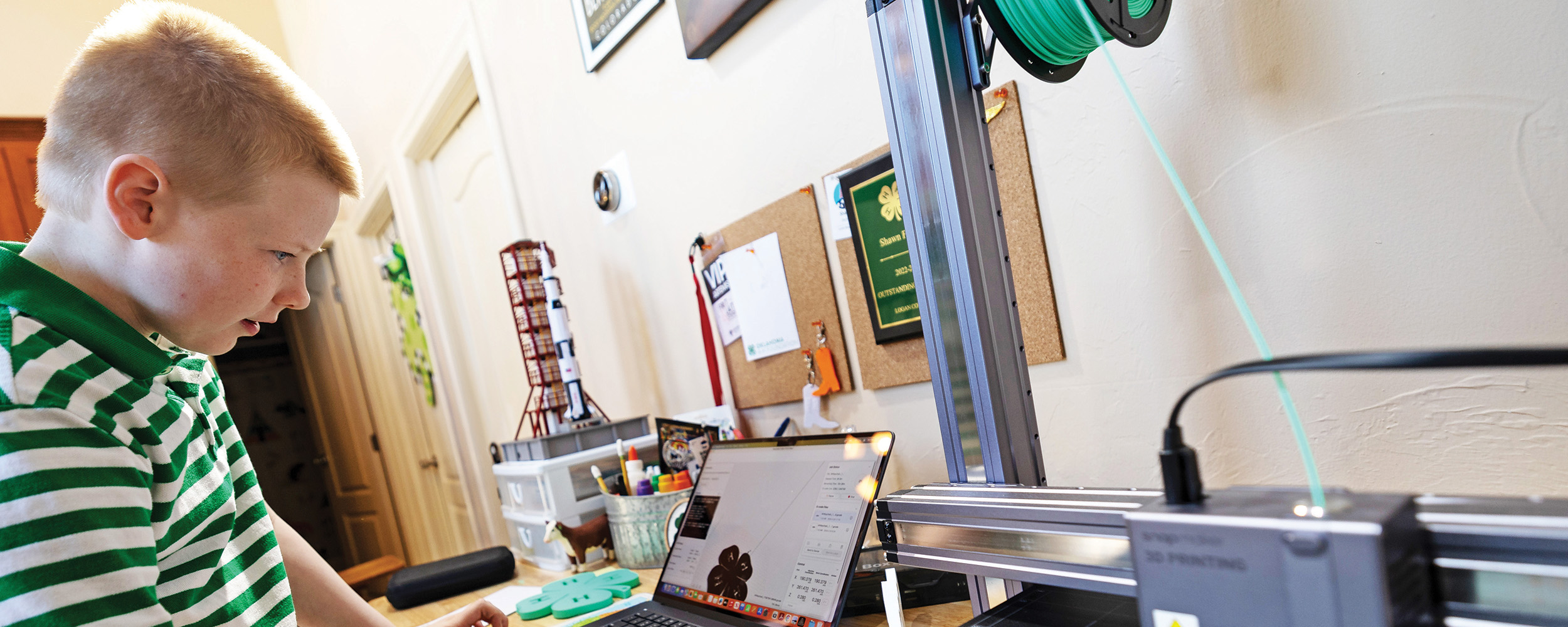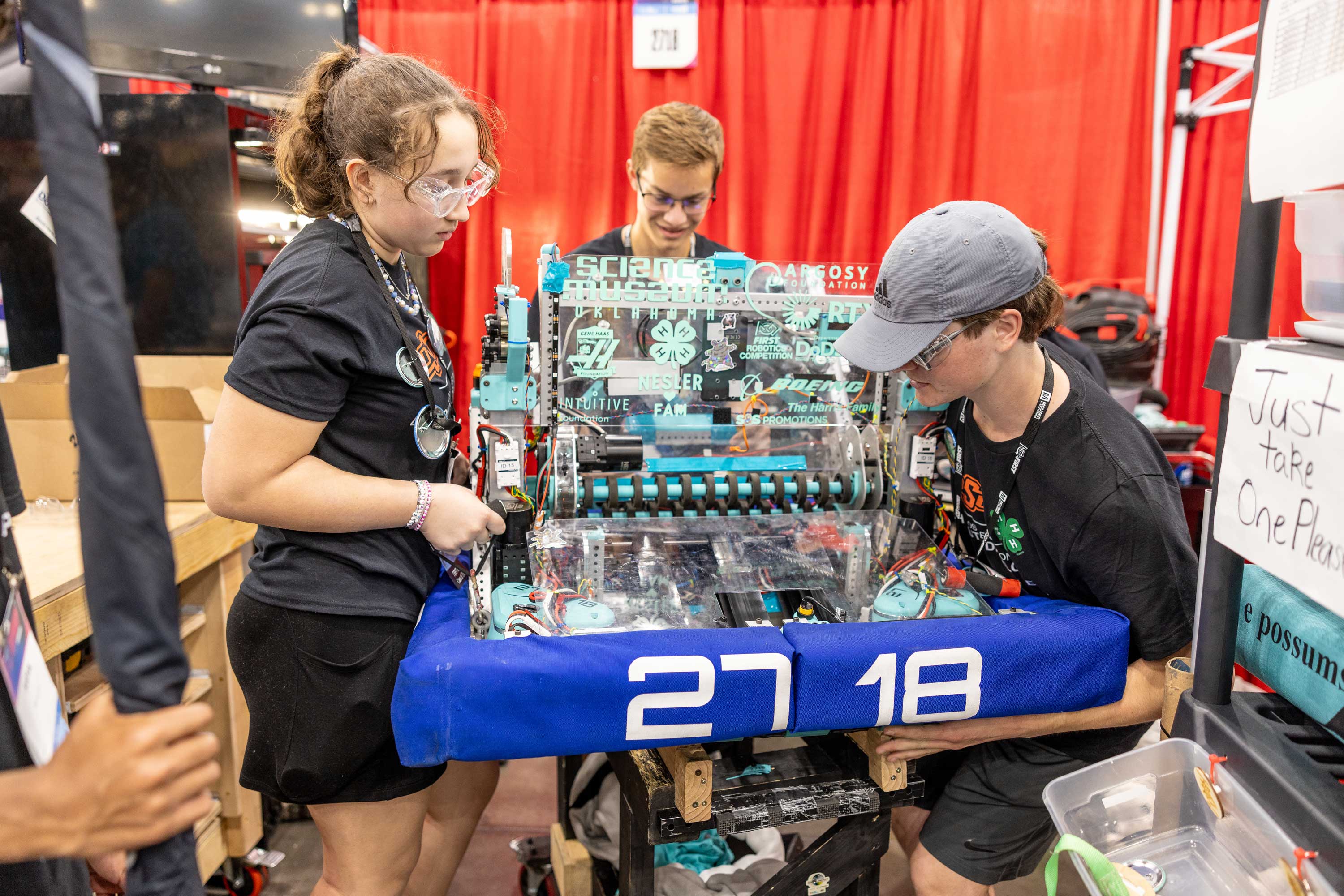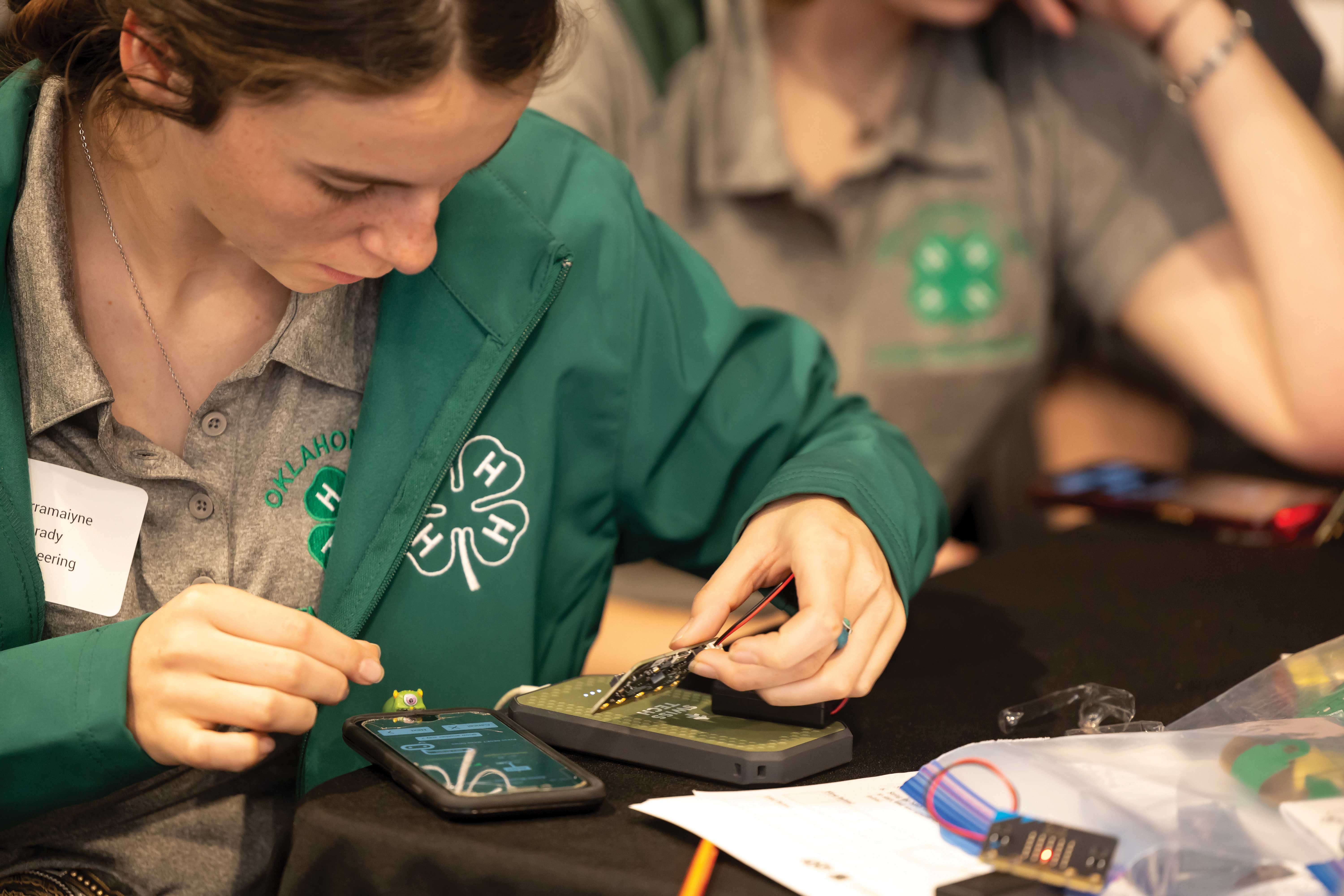
Youth organization teaches kids more than just agriculture
Wednesday, May 8, 2024
Media Contact: Mack Burke | Associate Director of Media Relations | 405-744-5540 | editor@okstate.edu
Oklahoma’s first 4-H members gathered in a small Johnston County town to explore innovative ways to increase crop yields.
More than a century later, the past meets the present in traditional programming with a modern twist.
Although 4-H is known for its agriculture projects, it continues to broaden its reach and meet the needs of youth by incorporating STEM programming.
STEM — science, technology, engineering and math — when combined with the four Hs of 4-H — head, heart, hands and health — creates empowering hands-on learning opportunities for club members and reflects the ever-changing landscape of today’s job market.

“I see STEM everywhere I look,” said Kelly Wardlaw, Oklahoma 4-H Youth Development STEM specialist. “STEM has a place in the more than 60 projects available in 4-H. If a 4-H’er is sewing a shirt, they need to know how to measure. For those who enjoy cooking, everything we do in the kitchen is chemistry. Agriculture, art, soil science, photography, gardening — it all involves STEM.”
Wardlaw said STEM teaches youth skills and critical thinking applications they can use throughout their lives.
“In science, we learn more when we’re wrong than when we’re right,” Wardlaw said. “When we’re right, we confirm what we already know, but when we’re wrong, we learn new information and use critical thinking skills to figure it out. Through hands-on learning opportunities in 4-H, youth are provided a safe environment where they can fail and try again.”
One way Oklahoma 4-H is educating youth about STEM is through outreach initiatives such as the 4-H Innovate program. Club members in eighth through 12th grade recently participated in the 2024 Innovate Youth Leadership Summit where they were trained to teach STEM-related workshops in their communities. Each participant, known as a STEM Innovator, completed the workshop and learned how to replicate it to teach others. The innovators will present the workshops in schools, summer library programs and daycare centers.
“This is a great program because Oklahoma youth are exposed to STEM activities, and the innovators are gaining experience in life skills such as public speaking, organization and time management,” Wardlaw said. “The innovators also develop positive working partnerships with adults who mentor them as they prepare and present the workshops.”
In 2023, 14 innovators reached 4,271 youth members through educational workshops and helped spark a greater interest in STEM activities.
Tulsa County 4-H STEM Innovator Joslyn O’Daniel said her involvement has provided opportunities she wouldn’t have had otherwise. She served as assistant captain and head programmer on a 4-H FIRST FTC robotics team that won the Oklahoma State University FIRST FTC Innovate Award.
“As a 4-H STEM Innovator, the plethora of events to educate others, specifically children, has built lifelong skills in leadership and public speaking,” O’Daniel said. “When we can break down, explain or demonstrate scientifically and mathematically challenging principles so others can understand, that is when we succeed.”

Cody Yount, an Oklahoma County 4-H educator, said Team OKC has participated in the FIRST Robotics World Championships since it was established three years ago. The senior level team traveled to Houston for the competition this year, and Yount said the 4-H club gives students interested in robotics an outlet to show their skills.
“All of these kids competing at this high level have been doing robotics since they were 6 years old,” he said. “They have grown up on it. For a lot of them, it really is like a team sport. It’s pretty cool to see.”
Loren Sizelove, Beaver County OSU Extension educator, is exposing club members to STEM through drone technology. Sizelove, a self-proclaimed technology hobbyist, started with Lego robotics and moved on to microprocessors to acquaint 4-H’ers with programming.
“I’m trying to introduce our young people to a job or life skill that will hopefully keep them in rural Oklahoma. Kids tend to move away from here once they graduate from high school,” Sizelove said. “Drones are a lot of fun to fly, but the technology can be applied to numerous jobs, including agriculture. Farmers and ranchers use drones to check livestock, map fields and even determine crop stress. Also, drones are increasingly being used by real estate agents and insurance adjustors, which are great careers.”
Wardlaw said STEM comes naturally to youth in today’s world of advanced technology, and they love being able to share what they know.
“Participating in STEM activities is a positive environment for everyone involved,” she said. “There is so much collaboration when club members are teaching one another how to do things. New things are being discovered all the time, and 4-H’ers get to be part of it.”
4-H is historically known for its youth instruction, and STEM broadens all those possibilities, said Steve Beck, state 4-H program leader.
“Empowering our youth with STEM education is like giving them the keys to unlock their full potential in tomorrow’s workforce. It’s not just about rockets and robots — it’s about fostering curiosity, critical thinking and innovation,” Beck said. “STEM is essential for shaping the leaders and problem-solvers of the future.”
Photos by: Mitchell Alcala and Robert Seale
Story by: Trisha Gedon | STATE Magazine
